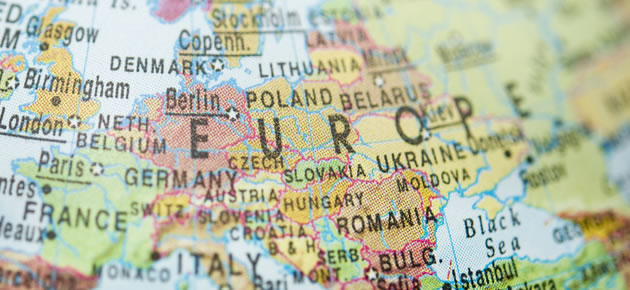On Tuesday the Euro to Australian Dollar was 0.40% stronger in spite of some disappointing economic data from the Eurozone.
At the beginning of the week the Australian Dollar had been supported by a surprisingly strong manufacturing report from China, which indicated that the policy measures introduced by the Chinese government are helping the world’s second largest economy recover from its slowdown.
The Australian Dollar was additionally boosted against several of its peers overnight as the domestic Roy Morgan Weekly Consumer Confidence measure showed improvement, with the gauge rising from 103.2 to 105.7.
However, with the price of oil easing in light of speculation that the current conflict in Iraq won’t disrupt the oil supply, commodity-driven currencies like the ‘Aussie’ have lost some of their appeal. The Australian Dollar moved away from a seven-month high against the US Dollar and slipped lower against peers like the Euro.
The EUR/AUD exchange rate approached a high of 1.4496 on Tuesday even as the German IFO Business Climate, Current Assessment and Expectations measure fell short of forecasts.
The Business Climate index slid from 110.4 in May to 109.7 in June, a steeper decline than the fall to 110.3 expected.
Similarly, the Expectations measure dropped from 106.2 to 104.8 this month instead of slipping to 106.0.
The Current Assessment gauge had been forecast to rise from 114.8 to 115.0 but it was actually unchanged.
These reports follow a stream of below-forecast Services and Manufacturing PMI’s for the Eurozone and its largest economies.
However, while the EUR/AUD pairing is buoyant at the moment, some industry experts expect that the Australian Dollar will reassert its strength again soon. In the view of currency strategist Steven Dooley; ‘The fundamentals line up for a strong Australian Dollar […] We had stronger Chinese data yesterday and the Australian economy is generally beating expectations. All the pieces of the puzzle are there.’
Meanwhile, the EUR/CAD exchange rate remained in a weaker position as last week’s impressive Canadian inflation and retail sales reports bolstered the Canadian Dollar against the majority of its currency rivals.
As the day continues additional movement in the EUR/AUD and EUR/CAD exchange rates may be limited, although investors will be looking ahead to tomorrow’s Australian Skilled Vacancies report, Germany’s GfK Consumer Confidence Survey and final first quarter US GDP figures.
Updated 16:25 GMT 24 June 2014
While the Euro to AUD exchange rate held its 0.45% advance during the European session, the Euro also rallied against the Pound (EUR/GBP) and fought its corner against the US Dollar (EUR/USD).
This morning’s German business climate reports might have defied expectations for improvement, but the Euro was seemingly unaffected by the lacklustre data.
Dovish commentary from Bank of England Governor Mark Carney pushed the Euro to Pound (EUR/GBP) exchange rate 0.26% higher while the Euro to US Dollar (EUR/USD) exchange rate held steady in spite of encouraging US Consumer Confidence and Home Sales figures.
Tomorrow’s German GfK Consumer Confidence survey remains tomorrow’s only notable economic news for the Eurozone.
Euro (EUR) Exchange Rates
[table width=”100%” colwidth=”50|50|50|50|50″ colalign=”left|left|left|left|left”]
Currency, ,Currency,Rate ,
Euro, ,US Dollar,1.3621,
,US Dollar,1.3621,
Euro, ,British Pound,0.8022,
,British Pound,0.8022,
Euro, ,Australian Dollar,1.4495,
,Australian Dollar,1.4495,
Euro, ,New Zealand Dollar,1.5603,
,New Zealand Dollar,1.5603,
Euro, ,Canadian Dollar,1.4592,
,Canadian Dollar,1.4592,
[/table]



